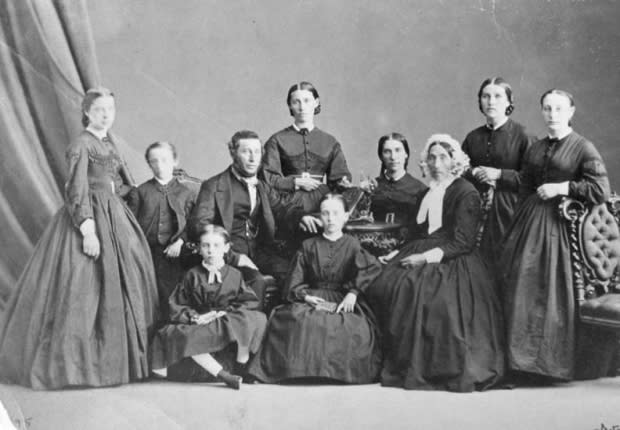Quebec church records show grandmothers were 'essential to survival' in early days of New France
Researchers drawing from a vast data set of Quebec church records from the 17th and 18th centuries say the steep population jump in New France may have been prompted by an unlikely category of people: grandmothers.
The data shows that the closer in geographic proximity a woman lived to her daughter, the more children her daughter was likely to have — and the more likely those children were to survive.

The researchers, from Université de Sherbrooke and Bishop's University, used church records because priests kept meticulous track of baptisms, marriages and deaths in each parish.
"It's a very rich data set, where almost every decade the population would double, almost," said Sacha Engelhardt, a Université de Sherbrooke postdoctoral fellow and lead author of the study, published in the scientific journal Current Biology.
The researchers analyzed the records of pre-industrial settlers in the St. Lawrence Valley between 1608 and 1799, and they determined grandmothers were "essential to survival."
"We were very interested in assessing the potential for grandmothers to help their daughters and thus indirectly increase their genetic footprint through a great number of grandchildren," said Engelhardt.
Engelhardt set out to understand menopause and the lifespan of women in their post-reproductive years.
Humans are one of the rare species that live well beyond their reproductive years, he said.
The "grandmother hypothesis" could explain why.
The study concluded that women who had mothers living nearby had more surviving children, because the grandmother would be a "potential for help."
Women of childbearing age with mothers in close proximity had, on average, two more children than those without mothers living nearby, and the number of children who survived to age 15 increased by about one.

Engelhardt said the child survival rate is significant in a population where one in two children died as infants.
The distance between the mother and grandmother was crucial, the study found.
For every additional 100 kilometres of separation between a mother and daughter, the daughter would have about 0.6 fewer offspring.
Engelhardt said the "grandmother effect" is not present in all human populations, so he thought drawing on data from an expanding population spread out over large distances, as in the case of Quebec in the pre-industrial era, would provide a better sense of the grandmother's "potential for help."
The research gives insight into human life history, he said.

